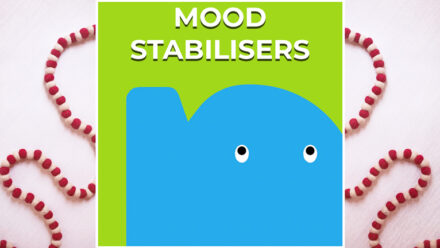
Fear of being ill, aka hypochondria. Jim van Os: ‘Imagine you feel a side stitch. But it’s not just a side stitch, it’s one that nestles itself within your thoughts.
What is this? A muscle tension? An infection? Or something worse? Before long, you’re googling it. You search for the symptoms, and soon your head is spinning. Your heart is pounding. Maybe it’s cancer. Maybe a rare disease. The thoughts keep going around, like a hamster in a wheel.
This is how strong and paralysing somatic fear can be. It’s a fear that doesn’t just go away by taking a paracetamol and having some rest. It’s deeper than that. It’s about “hypochondria”, “somatic symptom disorder”, or whatever you want to call it in DSM language. But above all, it’s about the conviction that something is fundamentally wrong with your body.
Fear of being ill as a controlling mechanism
Why does this fear feel so all-encompassing? Because it plays with one of our deepest instincts: the need for control over our own body. Your body is your home, your base, and when that no longer feels safe, everything seems to be falling apart. Fear of being ill touches the primal fears: the fear of deterioration, of losing control, of dying. That fear is human – everybody feels it now and then. But when it takes over your life, it becomes paralysing.
Fear of being ill: Jumping to delusions
In some cases the fear becomes incredibly strong. Imagine a young woman who is convinced something is wrong with her brain. She feels it, she knows it. She’s sure of it. She insists on having an MRI, but it doesn’t show anything. She keeps pushing though, and demands a neurosurgical procedure. The doctors try to ease her mind, but it doesn’t help.
She is convinced something is fundamentally wrong.
These type of convictions – that border on psychosis – are often metaphors for a completely normal human fear. The fear of decline, of physical damage, and the fragility of our existence. We all feel it, but sometimes the fear gets so intense that it creates its own reality. A reality that other people can’t comprehend. And that is isolating.
Fear of being ill: Breaking the pattern
What can you do? How do you learn to face this paralysing fear? It often starts with behaviour. Stop looking for medical reassurance, stop googling, stop going to the GP all the time. At first, this will feel unbearable, like jumping into the deep end without armbands. But it’s the only way to teach your brain that you don’t need constant certainty to be able to live your life.
But it doesn’t stop there. Underneath that behavioural change lies another layer: the convictions that feed that fear. Maybe you feel like every little sign your body gives you means catastrophe. Or that you need to be able to control everything. It will help you to learn to see that these convictions aren’t always true, and that your fear doesn’t have to be your enemy, but a part of yourself that you can learn to understand.
Fear of being ill: Learning how to carry this burden together
It’s important to tell you that not everyone loses these fears entirely – and that’s OK. Its about learning how to bear them, and your life not being dominated by endlessly searching for medical reassurance, unnecessary procedures, or medication that does more harm than good. It’s a question of acceptance and learning together how to live with the discomfort. Sometimes it helps to go through this process with a councillor, or with people who have the same fears.
Fear of being ill is human
If you are wrestling with somatic fear please know, you are not alone. That fear is a deep, human, feeling that affects all of us. But it doesn’t have to take over your life. By taking small steps you can learn that your body is not your enemy. It’s not perfect, it squeaks and creaks sometimes, but it’s your home, and you are allowed to have a bit of faith in it!





Comments: